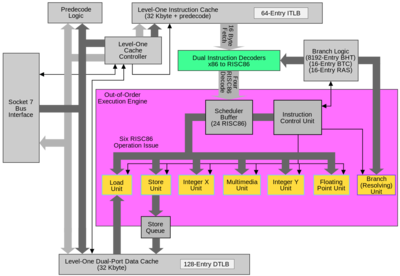Reply 40 of 54, by lazibayer
- Rank
- Oldbie
Because there are only limited number of candidate CPUs we can discuss them case by case.
I think everyone agrees that P5/P54C/P55C defines the essence of being a 586. Anything closely resembles these CPUs, such as K5, 6x86MX/MII, would be considered as 586.
The upper boundary gets blurred when we add K6 into consideration. Personally I think it's closer to PII and thus 686. Not sure about Winchip C6 and Rise mP6.
I am not sure if the line should be drawn above or below 6x86 and 6x86L. They both lack many Pentium instructions: RDMSR, WRMSR, RDTSC, and 6x86 also lacks CMPXCHG8B.
I don't have enough knowledge to classify Nx586.
I don't think MediaGX series would qualify as 586 due to its 30-33MHz system bus.
